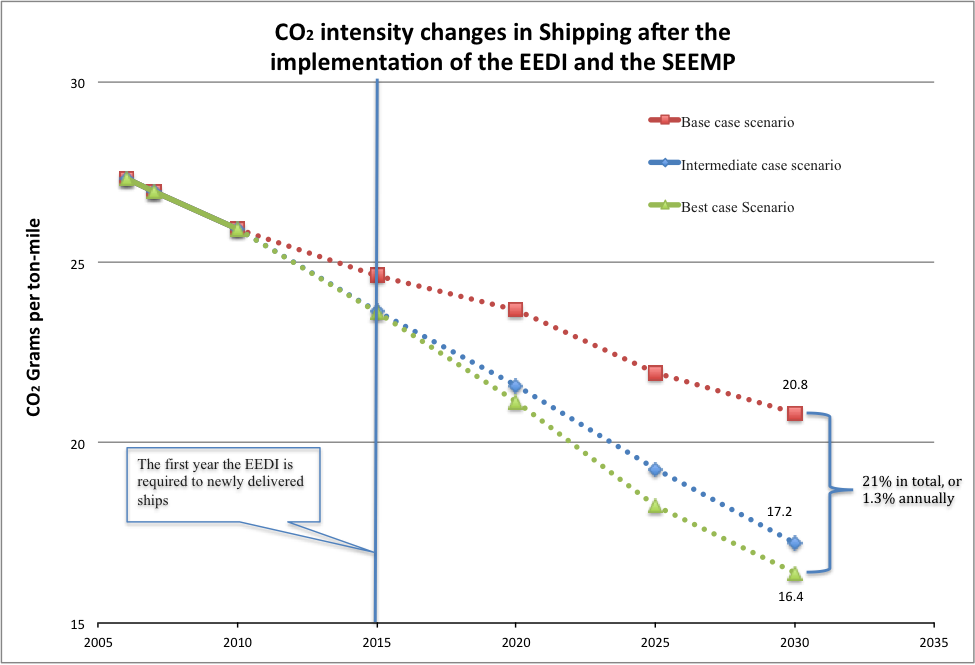Blog
Cutting Carbon from Ships
The war of words sparked by Europe’s requirement that airlines serving EU airports join its Emissions Trading System continues to heat up (see, for example, here and here and here and here). A group of countries led by the U.S., China, India, and Russia argue that the International Civil Aviation Organization (ICAO) is the only proper authority to regulate international aviation; EU ministers and their defenders say ICAO has dragged its feet for too long.
In the heat of the argument, few have seemed to note that the International Maritime Organization (IMO), ICAO’s counterpart in the shipping sector, has in the past year taken several long strides toward achieving the kind of progress on regulating greenhouse gas emissions that Europe (along with other countries) is demanding, and that ICAO has so far found beyond its capacities. The contrast between the two sectors may be instructive.
In July 2011, the IMO adopted two regulations aimed at slowing the rate of growth in CO2 emissions from international shipping: the Energy Efficiency Design Index (EEDI) and the Ship Energy Efficiency Management Plan (SEEMP). These are the first global regulations mandating efficiency improvements in a transportation sector. The EEDI requires new-built ships to reach a new efficiency standard relative to a reference average of similar ships (we summarized the formula used here). The SEEMP requires all ships (or shipping companies) to develop and maintain a plan to maximize operational efficiency.
The process of hammering out the details of the regulations and garnering the necessary support of shipping nations was prolonged and challenging. As it has in the aviation sector, the concept of common but differentiated responsibility (CBDR) was an obstacle to progress, but IMO’s insistence on the principle of equal treatment of ships, and the pressing need to address vessel-based GHG, eventually won out. (See here and here for news summaries of the IMO meeting and negotiations last July.) To be sure, the EEDI has a controversial provision that allows countries to delay implementation by up to 4 years. Nevertheless, together EEDI and SEEMP place international shipping, already the most energy-efficient transportation mode, on an even less energy-intensive trajectory by substantially curtailing energy intensity, as measured in terms of grams of CO2 per ton-mile of goods transported.
The chart below* shows trends in CO2 intensity in shipping before and after the implementation of the EEDI and the SEEMP, under three scenarios developed by the IMO in its Second GHG Study. The base case represents the trend absent the new regulations, while the best case assumes no implementation delay. We also show an intermediate scenario where 50% of ships opt to delay the EEDI by 4 years (Tthe real deferral rate is most likely determined by market demand, we use 50% here for analytical purposes).
Note that even before the IMO regulations come into effect shipping is becoming more energy-efficient, largely due to the steady improvement of marine diesel engines, better maintenance strategies (such as hull coating and propeller polishing), and, more recently, widespread implementation of slow steaming. In this regard the marine sector echoes claims sometimes made by airlines that the imperative to reduce operating costs gives them all the motivation they need to pursue more efficient technologies and obviates the need for regulation. (Though my colleagues on the ICCT’s aviation team have demonstrated that market forces cannot be relied upon in the aviation industry to produce consistent improvement over the long term given the stagnation in efficiency improvements in the aviation sector for the last decade.)
But quite clearly after the new efficiency regulations take effect the rate of progress accelerates—and without them it decelerates. Carbon intensity from shipping is projected to decline from 25.93 grams of CO2 per ton-mile in 2007 to 17.22 grams per ton-mile in 2030 under the intermediate scenario. It may drop even further, to 16.40 grams CO2 per ton-mile, under the best case scenario.
It’s important to add that neither EEDI nor SEEMP are likely to arrest or reverse the growth in absolute CO2 emissions from shipping, thanks to a projected 140% increase in the total number of ton-miles between 2007 and 2030. But these efficiency regulations are expected to slow the overall the rate of growth in total CO2 emissions from international shipping to 37%–44% from 83% under the base case scenario.
To reduce CO2 emissions in absolute terms, the IMO is now discussing market-based mechanisms that are likely to achieve substantial CO2 emission reduction either through fleet-wise mandatory energy efficiency improvement or through market incentives. Member countries, the industry, and other stakeholders are debating nine options, with the goal of an agreement on MBM by the middle of 2013. That appears to be an optimistic target, given the options on the table and the divided member states. But the EU has also made it clear that it is prepared to bring international shipping into the ETS absent effective alternative measures to reduce GHG emissions, and that may encourage agreement at the IMO. If it does, the contrast with ICAO’s inaction could become even sharper.
*Ton-mile data come from UNCTAD and are projected to 2030 based on IMO’s forecast. Future CO2 emissions without the EEDI and the SEEMP are derived from the IMO under the A1B scenario, which represents fast growth in economics and population, rapid technology penetration, and balanced energy sources. The CO2 reduction from both regulations is based on analyses by the IMO and the ICCT.

